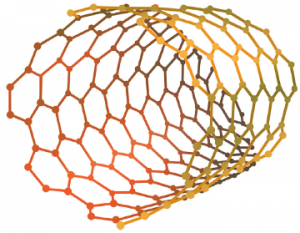Nanotechnology
Nanotechnology in orthopedics
After: „Nanotechnology in orthopedics: a clinically oriented review, Smith et al. BMC Musculoskeletal Disorders (2018) 19:67
Context
Nanotechnologies are based on molecules not greater than 100 nm. At that size, the physical properties of materials may change (conductivity, mechanical resistance, etc.). These technologies are under intensive research. Applications in the field of orthopedics are presented hereafter.
Spine
Nanotechnologies opened a way to intervertebral disc (IVD) regeneration when combined with mesenchymal stem cells (MSCs) therapy. On one hand, nanoparticles are used as scaffolds in order to extend graft lifetime, on the other hand, nanotubes electrical properties allow to reproduce myelin behavior. Nanotubes structures can be used as synthetic nerve conduits. Moreover, nanoparticle have been shown to not only enhance implants biomechanical properties, but also accelerate bone growth (osteogenesis) around implants.
Oncology
The most promising application is called targeted drug delivery. Cancer treating drugs can be loaded with dedicated nanoparticles which will not only help select the cancer cells -thereby reducing collateral toxicity to healthy cells- but also enhance the drug ability to pass the cancer cell surface. Besides, selenium-based particles are shown to significantly prevent cancerous cells to appear around implants. Finally, nanoparticles can also be used as biosensors, allowing to detect cancerous cells at a very early stage or to assess the efficiency of a chemotherapy.
Implants and regeneration
Nanoparticles-based research not only aims at enhancing new generation implant lifetime, but also improving its biocompatibility. For instance, carbon nanotubes brought ultra-high molecular weight polyethylene implants to be so resistant that tibial component are not being considered. Nanotubes can also be integrated to bone cements, enhancing ossointegration and osteoblast activity. Further research evidenced the positive role of nanoparticles in cartilage and tendon regeneration.
Limitations and risks
Long-term effects of nanoparticles onto human health still need intensive research in order to adress potential risks.
FOCUS: NANOTUBES

Nanotubes are single layer carbon-based structures with outstanding mechanical and electrical properties. As such, nanotubes allowed multiples breakthrough in nerve regeneration, implant scaffold engineering and drug delivery.
